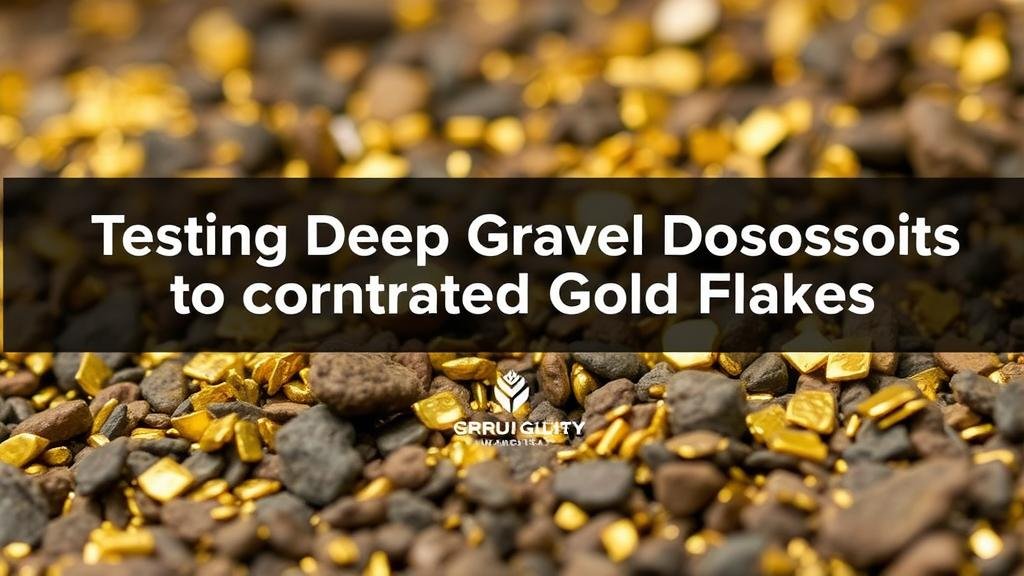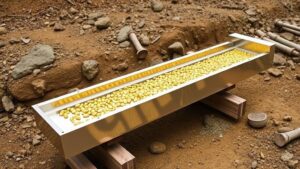Testing Deep Gravel Deposits for Concentrated Gold Flakes
Testing Deep Gravel Deposits for Concentrated Gold Flakes
The extraction of gold from deep gravel deposits is a critical focus for many mining operations worldwide. These deposits, often consisting of layers of sand and gravel, can contain concentrated gold flakes that represent a significant economic opportunity. This article provides a comprehensive overview of the testing methods used to evaluate these deposits, discussing the geological background, testing techniques, and practical applications in the field.
Understanding Deep Gravel Deposits
Deep gravel deposits form through geological processes such as erosion, sedimentation, and weathering. are typically found near river beds and ancient river channels, where water flow has concentrated valuable minerals over time. Gold flakes, among other heavy materials, settle at the bottom due to their density, making certain gravel beds prime candidates for gold exploration.
Geological Considerations
Before testing for gold concentration, understanding the geology of the area is essential. Gold is often associated with specific rock types and environmental conditions. Characteristics to consider include:
- Presence of Quartz: Gold frequently coexists with quartz, making areas with significant quartz deposits potential hotspots.
- Mineralization Patterns: Recognizing the patterns of mineralization can provide clues on where to focus testing efforts.
- Historical Data: Analysis of historical mining records can guide modern testing strategies, highlighting proven areas of interest.
Testing Techniques
Various methodologies are employed to test deep gravel deposits for gold content. These techniques can be broadly categorized into sampling, laboratory analysis, and geophysical methods.
1. Sampling Techniques
Sampling is a critical first step in assessing the concentration of gold flakes within gravel deposits. Common sampling methods include:
- Bulk Sampling: Collecting large volumes of gravel to ensure representative material for analysis. This method is suitable for initial assessments.
- Grab Sampling: Involves taking smaller amounts from different locations to understand variability in gold distribution.
2. Laboratory Analysis
Once samples are collected, laboratory testing is conducted to determine gold content. Key analytical methods include:
- Fire Assaying: This traditional method involves heating samples to temperatures that allow gold to be separated, followed by quantifying the gold content.
- Atomic Absorption Spectroscopy (AAS): In this method, gold in the sample is dissolved and measured, providing precise concentration data.
3. Geophysical Methods
Geophysical methods are becoming increasingly important in gold exploration. Techniques such as ground penetrating radar (GPR) and electrical resistivity surveying can help assess the geological structure without extensive drilling. e methods allow for:
- Identifying Anomalies: Detecting variations in material properties that may indicate the presence of gold.
- Reducing Exploration Costs: Allowing mining companies to target drilling efforts more efficiently.
Real-World Applications
The application of these testing techniques has been demonstrated in numerous case studies around the world. For example, in the Klondike region of Canada, extensive bulk sampling has led to the successful extraction of gold from deep gravels with concentrations averaging 1.5 grams per cubic meter. Similarly, miners in California’s Sacramento Valley have employed AAS to refine their recovery processes, improving yield and reducing waste.
Conclusion
Testing deep gravel deposits for concentrated gold flakes is a multifaceted process that combines geology, sampling techniques, scientific analysis, and emerging technologies. By understanding the various methods of testing and their applications, mining companies can optimize their exploration strategies and enhance their chances of successfully extracting gold. As the demand for gold continues to grow, harnessing these techniques effectively will be crucial for ensuring that resources are managed sustainably and profitably.
Actionable Takeaway: For those involved in mining operations, investing in comprehensive geological studies and utilizing a mix of sampling, laboratory analysis, and geophysical methods can significantly improve the efficiency of gold extraction processes. Consider incorporating advanced technologies to maximize exploration effectiveness and reduce costs.



